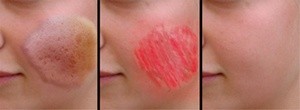Therapy for Keloids with Immunomodulators

Keloids are excessive growths of scar tissue that form over areas of injury or surgical wounds. Keloids affect people of all ages and are more frequent in African-Americans. Keloids are usually seen on the neck, legs, upper trunk, and chest. Keloids frequently follow the lines of injury and appear red, smooth, and shiny with regular or irregular ridges. Keloids developing on the ears after piercings do not carry the same risk of future keloids as the keloids in the other sites do.
Keloids tend to be itchy, tender, and painful and can also interfere with movement of limbs. The lesions usually grow back and sometimes are larger than before.
Treatments for keloids include cortisone solutions injected into the scar at regular intervals, silicone gel sheeting and ointments, primary excision, and radiation therapy.
Drugs used to treat keloids include corticosteroids, immunomodulators, and antihistamines.
Immunomodulators are natural or synthetic substances that help regulate the immune system. They can be administered by injections or as topical creams. They work by interfering with aspects of the immune response at the wound site, leading to a decrease in collagen production and deactivation of fibroblasts. Topical immunomodulators include pimecrolimus, (Elidel and Douglan), tacrolimus, methotrexate, and penicillamine.
A new technique combining tangential excision of the keloid and injection of Intron-A (interferon A) into the site hasshown to decrease the chances for regrowth.
Intron-A
Intron-A is made up of protein and is secreted by cells of the immune system. It is an immune system modifying medicine. It works to boost the immune system response and reduce the growth of cancer cells. It is FDA approved and helps our immune system fight off infection.
Procedure
The area to be treated is numbed with local anesthesia. The keloid is removed along with the skin and the area is cleansed. The injections are given immediately after excision and are injected at the suture line of the keloid excision site then a bandage is applied. The injections are also given 1 week later. A follow up appointment is made for to assess the healing. At the same time dilute cortisone injections can be added to treat any residual raised areas. Keloids can return and may require further or other treatments. Other complimentary therapies include pulse dye laser therapy, intralesional cortisone injections, and topical medicines such as Spectragel and Aldara cream may be required to obtain the greatest improvement.
Indications for Immunomodulators
Immunomodulators are used for many diseases that involve the immune system. Different interferons are used for different conditions and can be used for treating:
- Leukemia
- Hepatitis
- Other immune related illness
Side effects
The most common side effects reported with immunomodulator drugs include fever, chills, muscle aches, headache, and fatigue.
Schedule your consultation with Dr. Resnik
